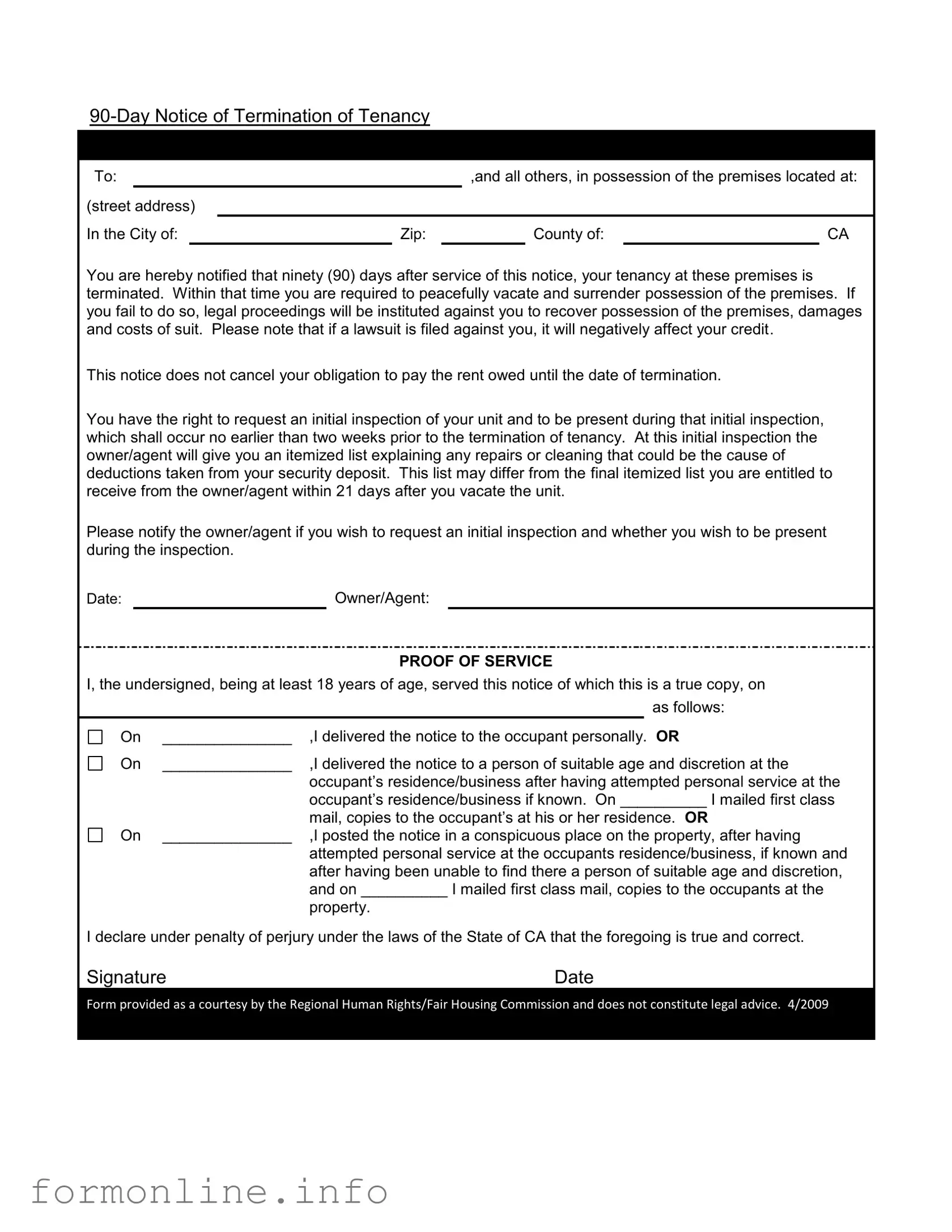The 30-Day Notice to Quit is a document that serves a similar purpose to the 90-Day Notice to Move Out. It is typically used when a landlord wishes to terminate a month-to-month lease agreement. This notice informs the tenant that they have 30 days to vacate the premises. While the time frames differ, both notices require tenants to leave the property and outline the consequences of failing to do so, such as potential legal action.
The 60-Day Notice to Vacate is another form that parallels the 90-Day Notice. This document is commonly used in situations where a landlord seeks to end a tenancy that has lasted longer than a month but less than a year. Like the 90-Day Notice, it stipulates a specific time frame for the tenant to vacate and emphasizes the importance of compliance to avoid legal repercussions.
The Lease Termination Letter is a broader document that can be issued by either the landlord or tenant. It signifies the intention to end a lease agreement, regardless of the lease duration. This letter may include a variety of terms and conditions for moving out, similar to the 90-Day Notice, but it is often more flexible and can be negotiated between the parties involved.
A Notice of Non-Renewal is issued by a landlord to inform a tenant that their lease will not be renewed at the end of its term. This document serves a similar function to the 90-Day Notice by notifying the tenant that they must vacate the property. However, it is generally used when the lease is set to expire rather than terminating an ongoing tenancy.
The Eviction Notice, or Unlawful Detainer Notice, is a more serious document that indicates a landlord's intent to evict a tenant for various reasons, such as non-payment of rent or lease violations. While the 90-Day Notice is a preliminary step in the termination process, an Eviction Notice is often the final step in a legal proceeding to remove a tenant from a property.
The Move-Out Notice is a document that tenants may provide to their landlords to formally notify them of their intention to vacate the premises. While the 90-Day Notice is initiated by the landlord, the Move-Out Notice empowers tenants to take control of their moving timeline. Both documents share the goal of ensuring a smooth transition out of a rental property.
The Final Inspection Notice is a document related to the move-out process. It notifies tenants of their right to an inspection before they vacate. Similar to the 90-Day Notice, this document emphasizes the importance of understanding potential deductions from the security deposit, ensuring that tenants are informed about their rights and responsibilities during the moving process.
For those considering purchasing a mobile home, it is essential to familiarize yourself with the Mobile Home Bill of Sale, which serves as a key document in the ownership transfer process. This form not only captures crucial transaction details but also safeguards the interests of both buyer and seller, facilitating a legally compliant transfer in Texas.
The Rent Increase Notice can also be considered similar, as it is a formal communication from a landlord to a tenant regarding changes in rental terms. If a tenant does not agree to the new terms, they may choose to vacate the property. Both notices require tenants to respond within a specified time frame, and they can lead to the end of a tenancy if the tenant decides not to accept the new terms.
The Security Deposit Return Notice is a document that outlines the conditions under which a tenant can expect to receive their security deposit back after moving out. While this notice is not directly related to the termination of tenancy, it is closely tied to the move-out process and serves to inform tenants of their rights regarding their deposit, similar to the information provided in the 90-Day Notice.
Lastly, the Notice of Lease Violation can be seen as a related document. It alerts tenants to specific breaches of the lease agreement, which may lead to termination of the tenancy if not addressed. While the 90-Day Notice is a final step in the termination process, a Notice of Lease Violation serves as an early warning, giving tenants the opportunity to correct their behavior before facing eviction.

